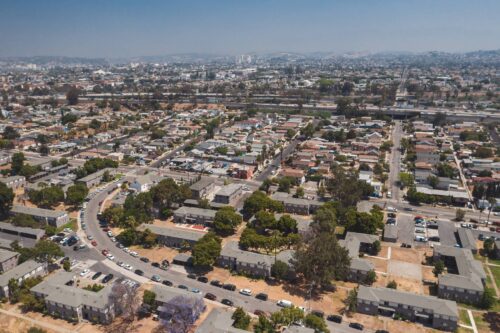Photo Credit: RODNAE Productions

California Becomes the First State to Commit to Ending the Sale of Polluting Heaters by 2030
The historic plan could avert 154 million metric tons of CO2 emissions by 2045. This is equivalent to the annual energy usage of over 19.4 million homes.
Last week, California became the first state in the United States to commit to ending the sale of polluting fossil fuel appliances — specifically, furnaces and water heaters — by 2030. This move comes on the heels of California’s ban on gas-powered cars by 2035 and is another major step toward achieving carbon neutrality by 2045. The historic commitment sets the state on a pathway to transition its homes, schools, and businesses to clean and efficient nonpolluting appliances such as electric heat pumps — all while setting a precedent for other states to embrace.
The California Air Resources Board (CARB) approved this measure in its State Implementation Plan, estimating that requiring all newly purchased furnaces and water heaters to be zero-emission in 2030 could reduce health-harming nitrogen oxide (NOx) pollution from fossil fuels — which contributes to various diseases from childhood asthma to deadly heart ailments — 20 percent below the current levels by 2037.
Our analysis further estimates that retiring all of today’s fossil fuel furnaces and water heaters in California at the end of their useful life starting 2030 would avert a cumulative total of 154 million metric tons of CO2 emissions by 2045, equivalent to the annual energy usage of over 19 million homes. On an annual basis, this policy will avert 1.16 MMT of climate emissions in its first year (2030). However, as more appliances switch to electric each year, avoided emissions will reach nearly 17 MMT annually in 2045 — equivalent to taking 3.6 million gas-powered vehicles off the road.
Importantly, the reduction in air pollution resulting from this policy increases exponentially, meaning the sooner the policy takes effect, the greater the impact. If CARB were to start phasing out newly installed fossil fuel furnaces and water heaters in 2025, it could avert nearly 60% more emissions by 2045 from acting just five years sooner.
As the policy applies to new appliances, home and building owners seeking to replace retired furnaces or water heaters will only be able to select from clean and electric alternatives starting in 2030. Because these appliances can last 20 years or more, it is critical that replacements are fossil-free to prevent locking in decades of additional air pollution and climate-warming emissions.
As CARB prepares its zero-emissions appliance policy, it must ensure California remains on track for equitable implementation in 2030. This will help the state set another high bar in US states’ transition to a healthy, affordable and clean electric future for all.
This analysis only looks at direct emissions from fossil fuel appliances. Estimates may be conservative due to limitations in commercial sector data. Analysis uses National Renewable Energy Laboratory’s (NREL) end use load profiles, U.S. Energy Information Administration’s (EIA) Residential Energy Consumption Survey data (2020), and U.S. Environmental Protection Agency (EPA) emissions factors. It assumes linear appliance turnover at the end of useful life. Appliance lifetime estimates from E3 and EIA: 13 years for residential water heater, 18 years for residential furnace, 17 years for commercial water heater, 23 years for commercial furnace.